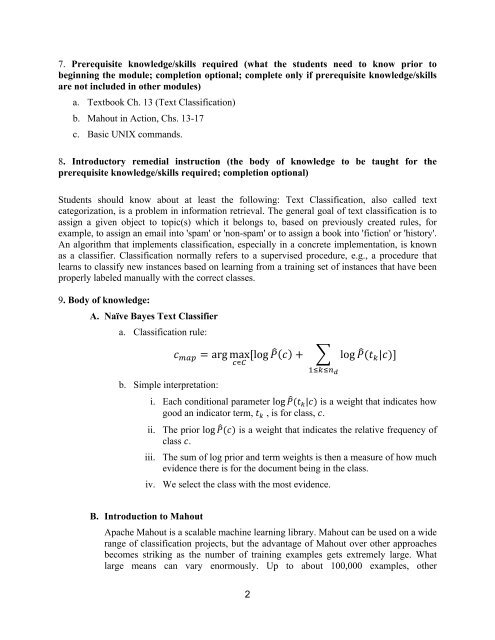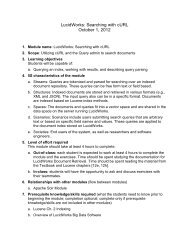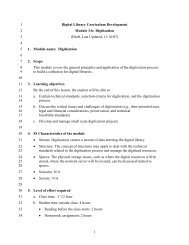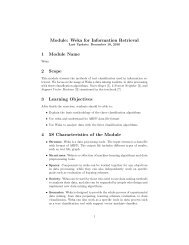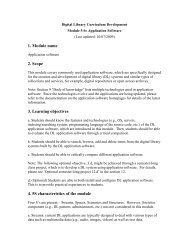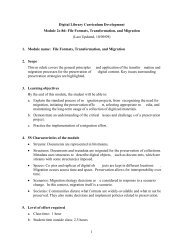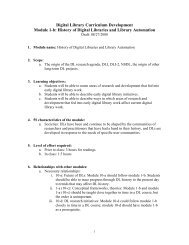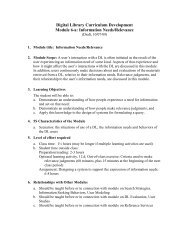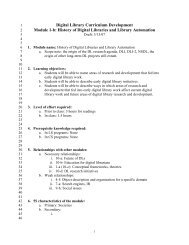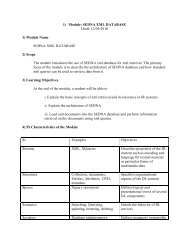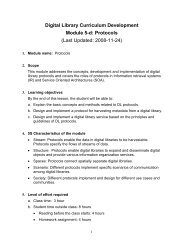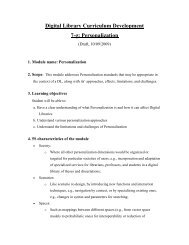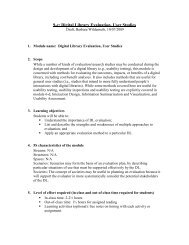Text Classification using Mahout (Nov. 6, 2012)
Text Classification using Mahout (Nov. 6, 2012)
Text Classification using Mahout (Nov. 6, 2012)
You also want an ePaper? Increase the reach of your titles
YUMPU automatically turns print PDFs into web optimized ePapers that Google loves.
7. Prerequisite knowledge/skills required (what the students need to know prior to<br />
beginning the module; completion optional; complete only if prerequisite knowledge/skills<br />
are not included in other modules)<br />
a. <strong>Text</strong>book Ch. 13 (<strong>Text</strong> <strong>Classification</strong>)<br />
b. <strong>Mahout</strong> in Action, Chs. 13-17<br />
c. Basic UNIX commands.<br />
8. Introductory remedial instruction (the body of knowledge to be taught for the<br />
prerequisite knowledge/skills required; completion optional)<br />
Students should know about at least the following: <strong>Text</strong> <strong>Classification</strong>, also called text<br />
categorization, is a problem in information retrieval. The general goal of text classification is to<br />
assign a given object to topic(s) which it belongs to, based on previously created rules, for<br />
example, to assign an email into 'spam' or 'non-spam' or to assign a book into 'fiction' or 'history'.<br />
An algorithm that implements classification, especially in a concrete implementation, is known<br />
as a classifier. <strong>Classification</strong> normally refers to a supervised procedure, e.g., a procedure that<br />
learns to classify new instances based on learning from a training set of instances that have been<br />
properly labeled manually with the correct classes.<br />
9. Body of knowledge:<br />
A. Naïve Bayes <strong>Text</strong> Classifier<br />
a. <strong>Classification</strong> rule:<br />
b. Simple interpretation:<br />
! !"# = arg max<br />
!∊! [log ! ! + log !(! !|!)<br />
!!!!! !<br />
]<br />
i. Each conditional parameter log !(! ! |!) is a weight that indicates how<br />
good an indicator term, ! ! , is for class, !.<br />
ii. The prior log !(!) is a weight that indicates the relative frequency of<br />
class !.<br />
iii. The sum of log prior and term weights is then a measure of how much<br />
evidence there is for the document being in the class.<br />
iv. We select the class with the most evidence.<br />
B. Introduction to <strong>Mahout</strong><br />
Apache <strong>Mahout</strong> is a scalable machine learning library. <strong>Mahout</strong> can be used on a wide<br />
range of classification projects, but the advantage of <strong>Mahout</strong> over other approaches<br />
becomes striking as the number of training examples gets extremely large. What<br />
large means can vary enormously. Up to about 100,000 examples, other<br />
2


